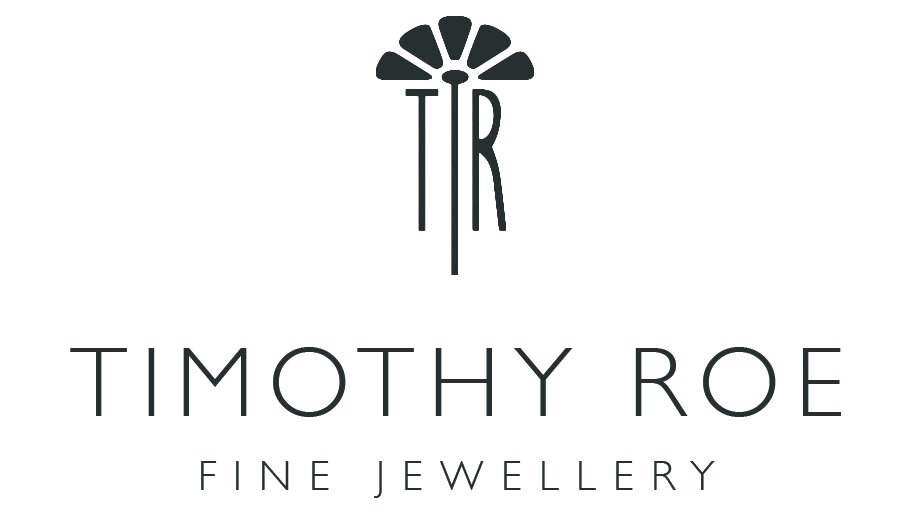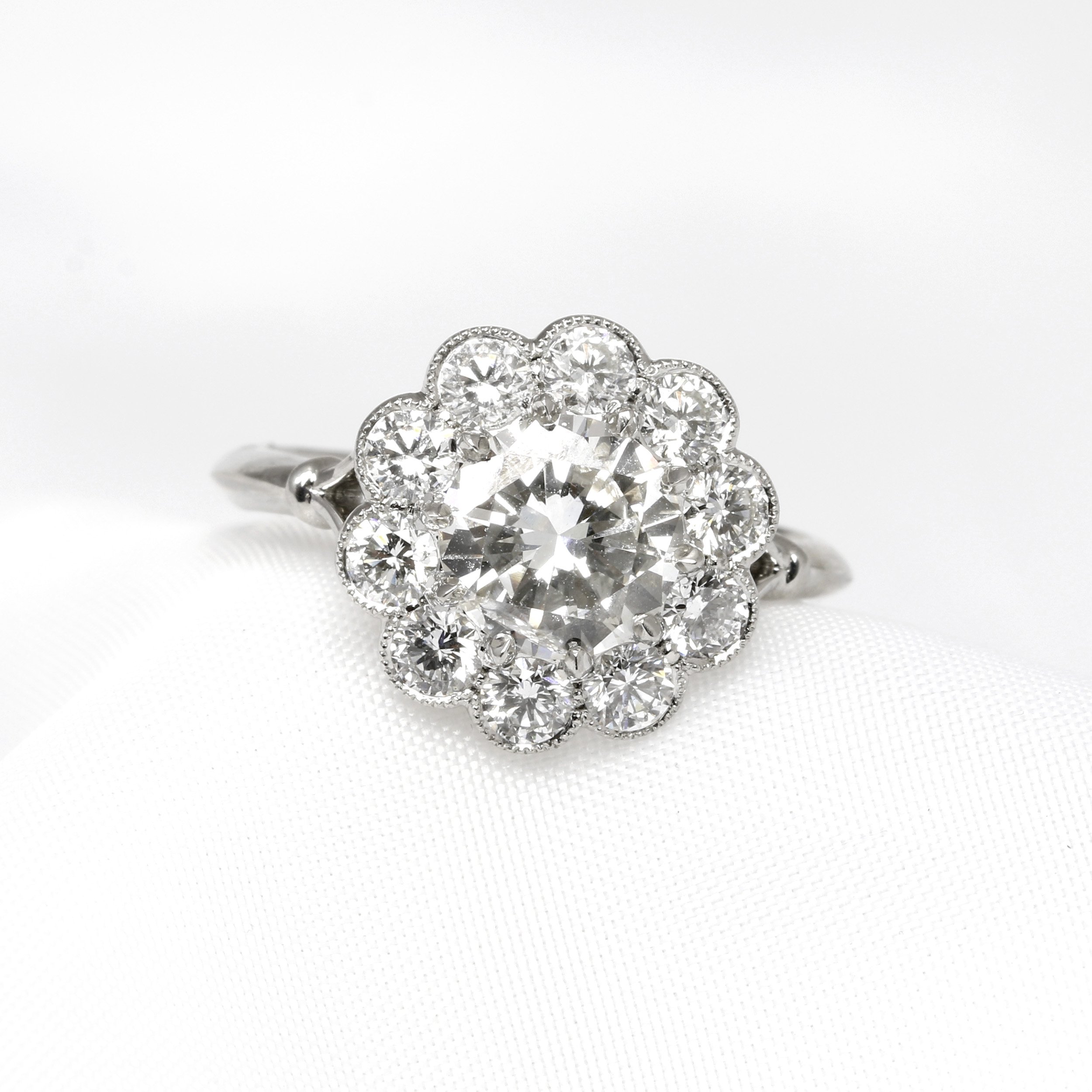The Carat Weight of Gems: What You Need to Know
When choosing a gemstone, whether for an engagement ring, a pendant, or a bespoke piece, one of the most common questions we hear is about carat weight. It’s easy to assume that all 1.0 carat stones are created equal, but when it comes to coloured gems like rubies or sapphires, things can look surprisingly different.
So, why does a 1.0 ct ruby look smaller than a 1.0 ct diamond? Are gemstones measured by size or weight? And how do you know what’s right for you?
Let’s break it down.
What Are Carats?
Carat (abbreviated as ct) is a unit of weight used specifically for gemstones. It is not to be confused with karat (kt), which refers to the purity of gold (although in the UK we can also spell gold purity as carat (ct), it just means something different in this context). For more information, read our guide on gold carats.
One carat equals 0.2 grams so 5 ct = 1.0 g.
But here’s the important part: carat refers to weight, not size.
This means two stones of the same carat weight can appear very different in size depending on what they’re made of—and how they’re cut.
Why Do Some Gems Look Smaller Than Others?
It all comes down to density — the amount of mass packed into a given volume.
Think for a moment about cakes: two cakes are the same size and proportions but one is a sponge cake and the other is fruit. The fruit is heavier because it is more dense whilst the sponge is light and airy making it less dense. This is the same for gemstones.
Each gemstone is made up of unique combinations of minerals and elements. These combinations create a chemical formula, and depending on the atomic weights of those elements, the gemstone will be denser or lighter. Do you remember the periodic table in science class? Each element has an atomic number in the top right hand corner. All gems except diamonds are compound elements being made up of more than one element so their atomic weights will be added together or changed accordingly and this affects their density.
So what does this mean in real life?
Rubies and sapphires, which belong to the corundum family, are denser than diamonds. They are heavier.
This means that a 1.0 ct ruby will appear smaller than a 1.0 ct diamond, even though they weigh the same.
To achieve a similar visual size, the ruby would need to weigh more than the diamond.
So, carat weights are not proportional or directly comparable across different gem types.
What are the Carats of Diamonds?
A diamond’s carat is a measure of its weight rather than its size. One carat equals 0.2 grams, and diamonds can range from tiny fractions of a carat to several carats in weight. While larger carat diamonds are rarer and more valuable, the carat alone doesn’t determine a diamond’s beauty. Cut, colour, and clarity all play an important role, and the best diamond is one where all four qualities are perfectly balanced.
What are the Typical Dimensions of a 1.0 ct or 2.0 ct Stone?
Here’s a quick reference for round brilliant cuts, one of the most common shapes:
1.0 ct diamond – approx. 6.2–6.4 mm in diameter
2.0 ct diamond – approx. 7.8–8.0 mm in diameter
However, these measurements can shift depending on the gemstone type and the cut. A 1.0 ct round sapphire may measure closer to 6.0 mm and have a different depth due to its higher density and the way it is cut.
For example, if we take 3 loose round brilliant cut gemstones of approximately 5.0 mm diameter, here are the carat weights we measured:
Diamond 5.1 mm diameter = 0.50 ct
Emerald 5.4 mm diameter = 0.45 ct
Ruby 5.0 mm diameter = 0.56 ct
Looking down at the gemstones face up they look the same size but the depth will change slightly depending on how they are cut. Diamonds have strict proportion regulations to maximise fire and brilliance whereas coloured gems are cut deeper to retain the colour and weight. In our example we see that ruby weighs more than diamond—its density is heavier whereas emerald is much lighter than both diamond and ruby for the same shape and diameter across the top.
Here is another example with a different shape gemstone looking at the volume of the stones of similar proportions:
An 1.09 ct oval/ cushion cut sapphire will have the approximate dimensions 6.4 mm x 5.2 mm x 5.0 mm giving a volume of 166.4 cm3 .
A 1.02 ct cushion cut diamond might have the approximate dimensions of 5.5 mm x 6.1 mm x 4.0 mm giving a volume of 152.64 cm3.
The Impact of Cut and Shape
Not only does gem material affect size, but so does shape and cut. Here’s how:
Emerald cuts spread the weight differently, making them appear smaller than round brilliants of the same weight. They need deeper pavilions generally but will be long and rectangular.
Cushion cuts often hold more weight in the pavilion (bottom part), giving a deeper profile but smaller face-up appearance.
Ovals and pears can appear larger for their weight due to their elongated shape, but even within these shapes, proportions vary. You can have narrow or wider ovals and the length of the stone varies, too.
So while carat weight may stay the same, the optical size and how the gem appears on the finger or neckline can change dramatically.
Here (above images) you can see that both rings are diamond and both have a weight of 4.0 ct but they appear very different in size due to their proportions and their cut.
What Should You Focus On Instead?
While carat weight is useful for budgeting and valuation, it shouldn’t be the only deciding factor. Consider instead:
The gemstone material (diamond vs sapphire vs tourmaline)
The shape and cut that suits your style
The overall dimensions and face-up size
The fit on your finger or the look on your neckline
Sometimes, a well-proportioned 0.80 ct gemstone can look just as impressive—or even better—than a deeper 1.0 ct stone that hides much of its weight beneath the surface.
Final Thoughts
When selecting a gemstone, it's not just about the numbers; it's about how the piece makes you feel. Whether you’re designing a bespoke ring, restoring a family heirloom, or finding the perfect pendant, our expert team is here to guide you through every step.
Come and see us to explore your options, see the jewellery in person, and discover what carat weight and cut combination is perfect for you.
Want to learn more? Visit our Inspiration Page or book a one-on-one consultation with our friendly gem experts today.









